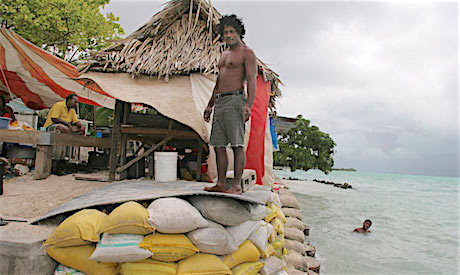A new study found that over the last decade, 15 percent of people in Tuvalu (population 10,857), 10 percent of people in Nauru (population 10,084) and 1.3 percent of people in Kiribati (population 103,058) moved abroad.
Many others — about 10,000 — tried to migrate, but could not. Others became “internal migrants,” placing strains on the already overpopulated capitals of Funafuti, Tuvalu, and South Tarawa, Kiribati.
The survey covered 6,852 individuals from 852 households in Kiribati, Nauru and Tuvalu.
While some believe that the habitability of their country is in question, and that they need to move, many more believed they had a right to stay in their homes, said Koko Warner of the Institute for Environment and Human Security at United Nations University, which helped lead the study.
That insistence has contributed to a raging debate over whether the Paris climate accord should include provisions for “loss and damage” resulting from climate change. .
New evidence is now suggests that these small islands will be more resilient to sea-level rise than we thought.
That is not to say that these nations won’t face significant environmental challenges.
Built of sand and shingle and lying just 1-3m above the current sea level, coral reef islands in the central Pacific and Indian Oceans are considered among the most vulnerable places on Earth.
The new findings suggest that, rather than being passive lumps of rock that will be swamped by rising seas and eroded by storms, the islands are dynamic structures that can move and even grow in response to changing seas.
On the face of it, this is potentially good news for Pacific communities.
The islands they call home may be less vulnerable than is commonly thought.
But the findings also suggest that although the islands may not be swamped by rising seas, they are likely to change in size and shift their position on the surface of reefs.
The rate of these changes may also increase as sea level rises.
This raises questions for their ongoing habitation. How will physical changes to the islands affect drinking water supplies, and how will communities need to adapt their farming practices?
Questions about island change must be addressed urgently in order to inform decision making and secure the future of Pacific nations.
Source
